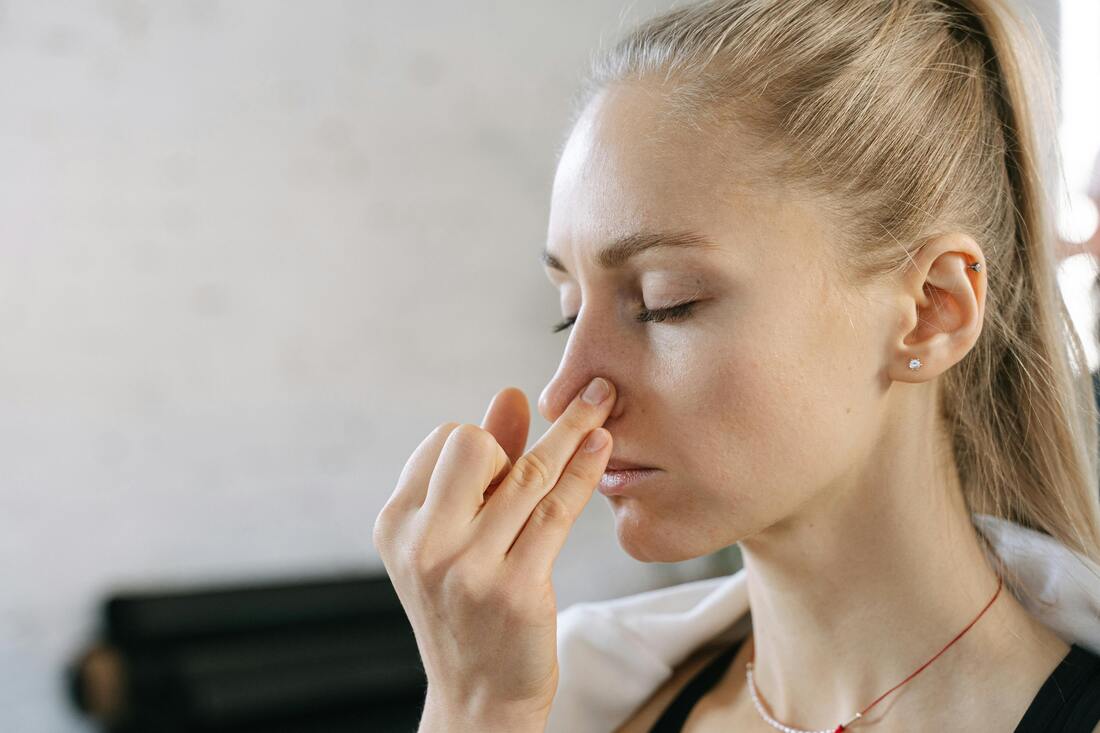Do you ever feel like you leave work at the office, but the stress follows you home?
Juggling work deadlines, commutes, and personal responsibilities can leave you feeling overwhelmed and drained by the end of the day.
If you find yourself constantly on edge, easily irritated, or struggling to unwind, you’re not alone.

Chronic stress can negatively impact your physical and mental health, leading to problems like anxiety, insomnia, and high blood pressure.
The good news is, there are simple and effective ways to manage stress and promote relaxation.
One powerful tool readily available to you is your breath.
Deep breathing exercises activate the body’s relaxation response, counteracting the fight-or-flight response triggered by stress.
This blog will guide you through a simple 10-minute breathing routine specifically designed to de-stress after work.
We’ll explore the science behind why breathing works, different breathing techniques, and how to incorporate this routine into your daily life.
Key Takeaways
- Chronic stress can have a significant negative impact on your health and well-being.
- Deep breathing exercises activate the relaxation response, counteracting the effects of stress.
- The following 10-minute breathing routine can be practiced daily to reduce stress and promote relaxation.
- Consistency is key! Regularly practicing breathing exercises will enhance their effectiveness.
The Science of Breath and Stress Relief
Before diving into the breathing exercises, let’s understand the science behind how they work.
When you’re stressed, your body goes into fight-or-flight mode.
This evolutionary response releases hormones like adrenaline and cortisol, preparing you to deal with a perceived threat.
While helpful in short bursts, chronic stress keeps this response activated, leading to the physical and emotional symptoms we associate with stress.
Deep breathing exercises, however, activate the relaxation response.
By focusing on slow, controlled breaths, you send signals to your nervous system to calm down.
This lowers your heart rate, slows your breathing, and reduces stress hormone levels.
The benefits of deep breathing for stress management are backed by scientific research.
A 2017 study published in the International Journal of Stress Management found that mindfulness-based breathing exercises, which often incorporate deep breathing, were effective in reducing stress, anxiety, and depression symptoms.
Here are some of the specific ways deep breathing helps combat stress:
- Increases relaxation response: As mentioned earlier, deep breathing activates the relaxation response, promoting feelings of calm and well-being.
- Reduces stress hormones: Deep breaths slow down the release of cortisol, a key stress hormone.
- Lowers blood pressure: Deep breathing can help regulate your blood pressure, which can become elevated due to stress.
- Improves focus: By calming the mind and reducing stress, deep breathing can improve your ability to focus and concentrate.
10-Minute Breathing Routine for De-Stressing After Work
Now that you understand the science behind deep breathing, let’s put it into practice with this simple 10-minute routine designed to help you unwind after a long day:
Preparation
- Find a quiet and comfortable place where you won’t be interrupted.
- Sit or lie down in a comfortable position. If sitting, ensure your back is straight and your shoulders are relaxed. If lying down, rest on your back with your knees bent.
- Close your eyes gently or soften your gaze if keeping your eyes closed feels uncomfortable.
The Routine

1. Diaphragmatic Breathing (4 minutes)
- Place one hand on your chest and the other on your belly.
- Inhale slowly through your nose for a count of 4, feeling your belly expand as your diaphragm contracts.
- Hold your breath for a count of 2 (optional).
- Exhale slowly through pursed lips for a count of 6, feeling your belly contract and draw inwards.
- Repeat for 4 minutes, focusing on slow, deep breaths and the rise and fall of your belly.
2. Alternate Nostril Breathing (3 minutes)

- Sit with your back straight and shoulders relaxed.
- Bring your right index finger to the bridge of your nose and gently close your right nostril.
- Inhale slowly through your left nostril for a count of 4.
- Hold your breath for a count of 2 (optional).
- Close your left nostril with your ring finger and exhale slowly through your right nostril for a count of 6.
- Inhale through your right nostril for a count of 4.
- Hold for a count of 2 (optional).
- Exhale through your left nostril for a count of 6.
- Continue this pattern of inhaling through one nostril, holding for a count (optional), exhaling through the other nostril, holding for a count (optional), and inhaling through the opposite nostril for a total of 3 minutes.
3. Cooling Breath (3 minutes)

- Purse your lips slightly, as if you’re about to whistle.
- Inhale slowly through your pursed lips for a count of 4.
- Exhale slowly through your pursed lips for a count of 8, feeling a cooling sensation with each exhale.
- Repeat for 3 minutes, focusing on the sensation of coolness with each exhale.
Ending the Routine
- Gently bring your awareness back to your body and surroundings.
- Take a few moments to sit or lie still, noticing how you feel.
- Open your eyes slowly when you’re ready.
Tips
- It’s normal for your mind to wander during the breathing exercises. Gently bring your attention back to your breath without judgment.
- If you find it difficult to hold your breath for a count, simply skip that part and focus on slow, deep inhales and exhales.
- As you become more comfortable with the exercises, you can gradually increase the duration of each round.
Frequently Asked Questions (FAQs)
Q: How often should I practice this breathing routine?
A: Aim to practice this breathing routine daily, ideally after work or whenever you feel stressed. Consistency is key to experiencing the full benefits of deep breathing exercises.
Q: Will this breathing routine help me fall asleep better?
A: Absolutely! Deep breathing exercises are known to promote relaxation and improve sleep quality. By calming your mind and body before bed, this routine can help you drift off to sleep more easily.
Q: Are there any breathing exercises I should avoid?
A: If you have any underlying health conditions, consult your doctor before starting any new breathing exercises. In general, avoid any techniques that cause dizziness or discomfort.
Q: Can I combine this breathing routine with other relaxation techniques?
A: Absolutely! Deep breathing exercises can be a powerful tool when combined with other relaxation techniques like meditation, yoga, or progressive muscle relaxation.
Conclusion
Taking a few minutes each day to focus on your breath can be a powerful tool for managing stress and promoting relaxation.
The 10-minute breathing routine outlined in this blog is a simple and effective way to unwind after a long day.
By incorporating this practice into your daily life, you can experience a calmer, more centered state of being and improve your overall well-being.
Remember: Consistency is key! The more you practice deep breathing exercises, the more effective they will become in managing stress and promoting relaxation. So, take a deep breath, relax, and enjoy the benefits of mindful breathing.
Additional Resources
- National Institutes of Health: Stress & Your Health
- American Psychological Association: How to Manage Stress
- Mayo Clinic: Deep Breathing Exercise
Disclaimer: This blog is for informational purposes only and should not be construed as medical advice. If you have any concerns about your stress levels or overall health, consult with a healthcare professional.



